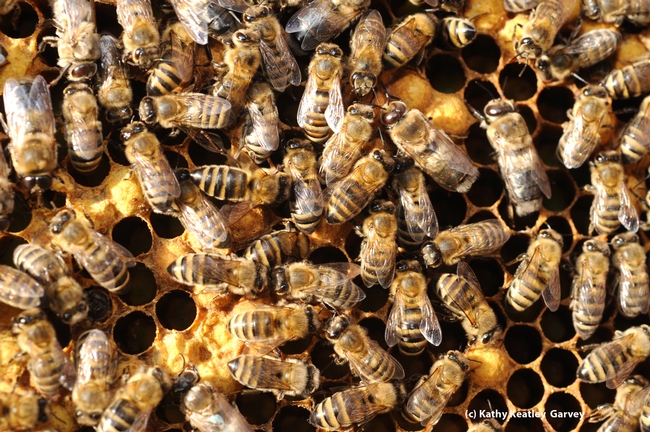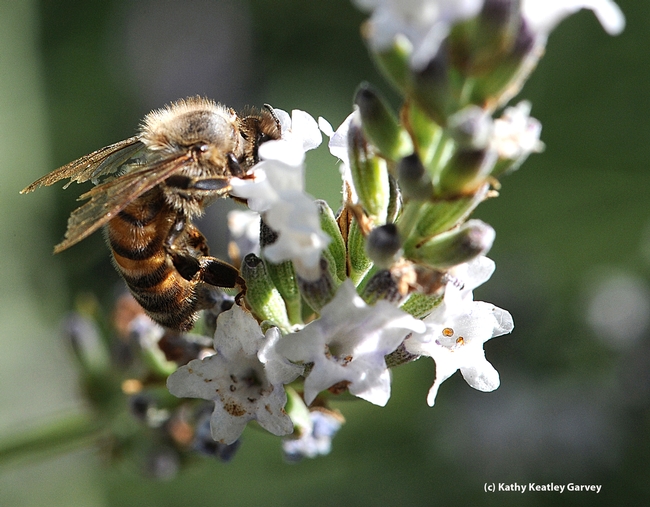Pity the poor worker bee.
In the spring/summer months, she lives only four to six weeks and then she dies. Bee scientists say she basically works herself to death.
For the first half of her short life, she works inside the hive, tending to the brood, feeding the queen and drones, processing the food, building and repairing the nest, and completing other responsibilities, all in total darkness. In the second half of her life, she leaves the hive, emerging from the total darkness to the bright light. Weather permitting, she'll forage every day for food, propolis or water for the colony.
You've probably noticed these older foragers, with tattered wings, scarred bodies and hairless thoraxes, foraging among the flowers. Those tattered wings could be the result of predators that missed: spiders, dragonflies, grasshoppers, dogs, birds and the like.
Worker bees do not fly well with flawed wings and they're even more susceptible to those crafty jumping spiders lurking in the flowers.
So it's interesting to read the recently published research by scientists at the Arizona State University and the Norwegian University of Life Sciences, research that shows that older honey bees experience reverse brain aging when they return to working inside the hive.
Writing in the journal, Experimental Gerontology, the researchers related that they tricked the older, foraging bees into returning to the hive to perform the social tasks of the younger bees.
In an ASU news release: Gro Amdam, an associate professor in ASU’s School of Life Sciences, said: “We knew from previous research that when bees stay in the nest and take care of larvae--the bee babies--they remain mentally competent for as long as we observe them. However, after a period of nursing, bees fly out gathering food and begin aging very quickly. After just two weeks, foraging bees have worn wings, hairless bodies, and more importantly, lose brain function--basically measured as the ability to learn new things. We wanted to find out if there was plasticity in this aging pattern so we asked the question, What would happen if we asked the foraging bees to take care of larval babies again?"
Well, they found that the older bees that returned to the hive seemed to recover their ability to learn, and that the protein in the bee brains changed for the better.
"When comparing the brains of the bees that improved relative to those that did not, two proteins noticeably changed," the news release said. "They found Prx6, a protein also found in humans that can help protect against dementia--including diseases such as Alzheimer’s--and they discovered a second and documented 'chaperone' protein that protects other proteins from being damaged when brain or other tissues are exposed to cell-level stress."
In some respects, you could almost say that stay-at-home moms are better off than the work-outside-the-home moms, but (1) worker bees are not moms, and (2) both are working. The queen lays the eggs, as many as 2000 eggs a day during peak season. The worker bees are females, but their ovaries are tiny and normally non-functional, says Norm Gary, emeritus professor of entomology at UC Davis in his book, Honey Bee Hobbyist: The Care and Keeping of Bees.
Still, we can imagine that this fascinating bee science research could lead to another tool to investigate dementia in elderly humans.
Attached Images:

